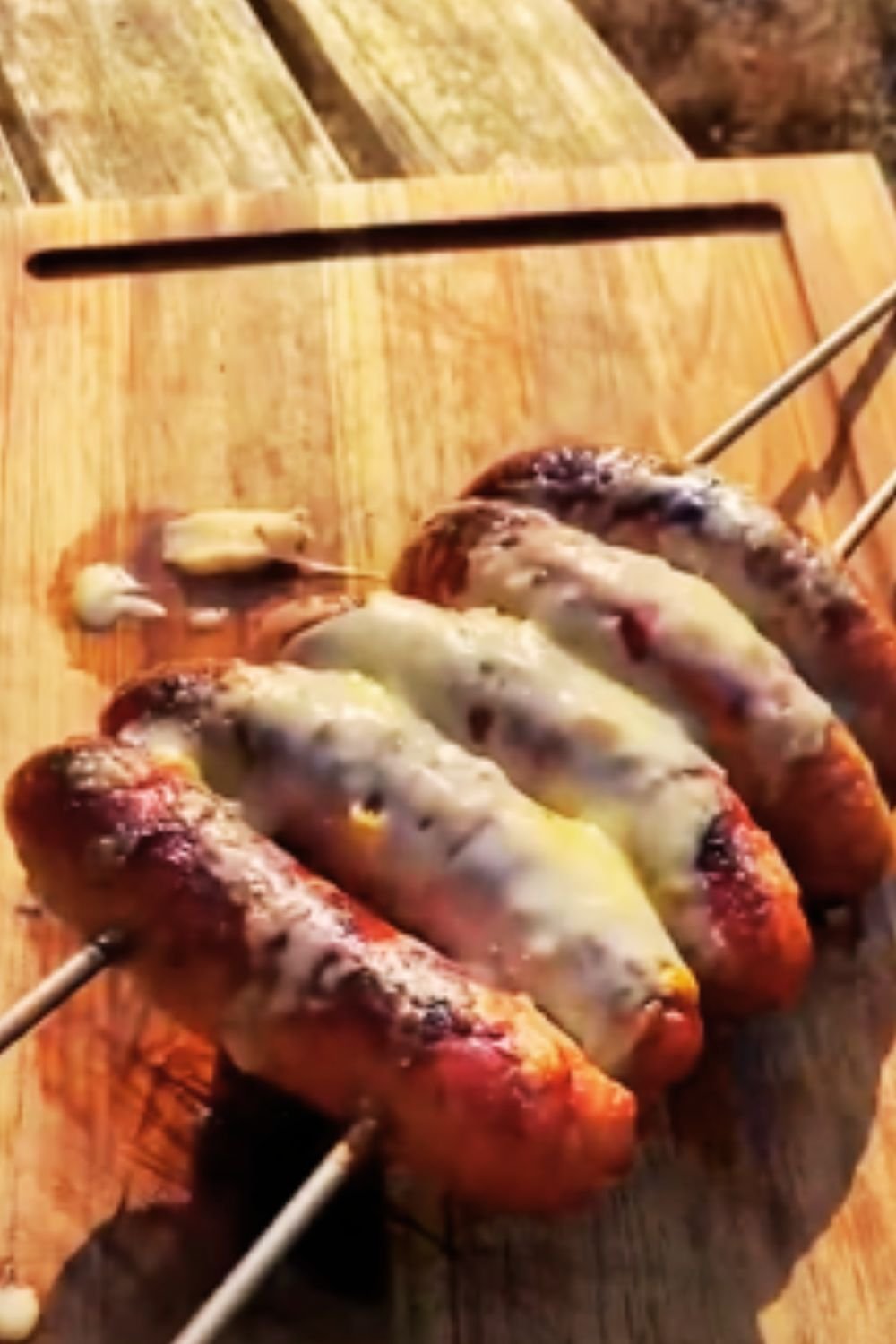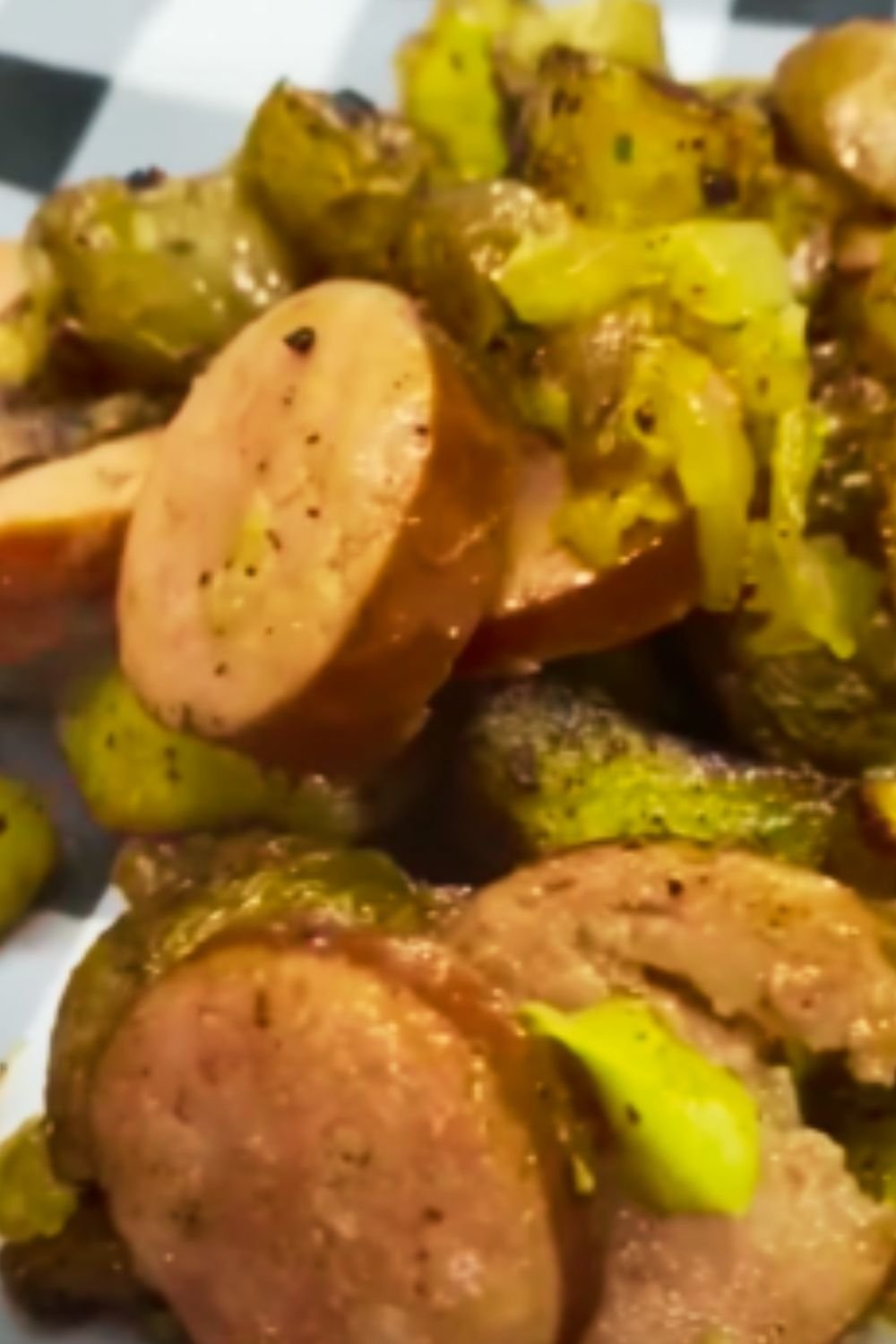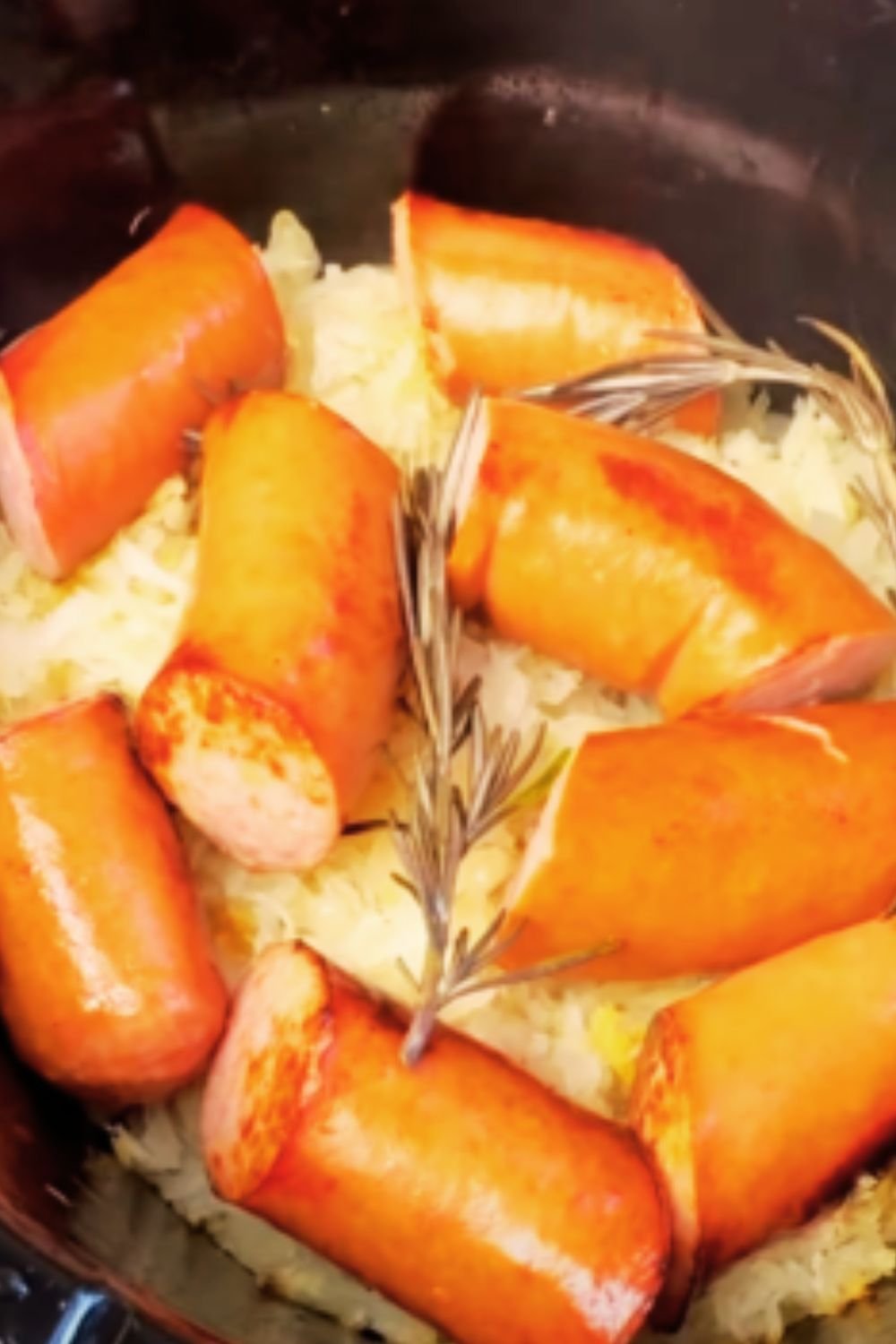Have you ever found yourself staring at a package of Italian sausage links in your refrigerator, wondering about the best way to cook them? I certainly have! After years of kitchen experiments and countless sausage dinners, I’ve mastered various methods to cook these flavorful links to perfection.
Italian sausage links are incredibly versatile and can transform any meal from ordinary to extraordinary. Whether you prefer the smoky char from a grill, the even cooking of an oven, the convenience of a stovetop, or the moisture-locking benefits of boiling, I’ve got you covered with comprehensive instructions for each method.
In this guide, I’ll walk you through everything you need to know about cooking Italian sausage links—from preparation tips to internal temperature guidelines, serving suggestions, and even troubleshooting common issues. By the end, you’ll be equipped with all the knowledge necessary to cook Italian sausage links like a pro, no matter which cooking method you choose.
What is Italian Sausage?
Before diving into cooking methods, let’s understand what makes Italian sausage special.
Italian sausage is a pork sausage seasoned with specific herbs and spices that give it its distinctive flavor profile. There are primarily two varieties you’ll encounter in most grocery stores:
- Sweet (Mild) Italian Sausage: Seasoned with fennel seeds, salt, and garlic. The “sweet” refers to the lack of heat, not an actual sweet taste.
- Hot Italian Sausage: Contains the same base seasonings as sweet Italian sausage but with the addition of red pepper flakes or other hot peppers for a spicy kick.
Both varieties can be found in either link form (encased in natural or artificial casings) or as bulk sausage (without casings). For this article, we’re focusing exclusively on cooking Italian sausage links.
Preparing Italian Sausage Links for Cooking
Proper preparation is crucial for achieving the best results, regardless of your chosen cooking method.
Quality Check
Before cooking:
- Check the expiration date on the package
- Ensure the sausage links have good coloring (avoid any that appear gray or have a slimy texture)
- Make sure the casings aren’t broken or split
Temperature Matters
For even cooking:
- Always start with sausages at room temperature — remove them from the refrigerator about 20 minutes before cooking
- Cold sausages straight from the refrigerator can lead to uneven cooking, with the outside potentially burning before the inside is fully cooked
To Prick or Not to Prick?
This is perhaps the most debated aspect of cooking sausages:
- Traditional method: Don’t prick the casings, as this allows the juices to remain inside, resulting in juicier sausages
- Alternative approach: Some cooks prefer pricking the sausages a few times with a fork to prevent them from bursting during cooking
I personally recommend not pricking the sausages unless you’re boiling them first (more on that later). When cooked at the proper temperature, unpricked sausages retain more moisture and flavor.
Cooking Italian Sausage Links on the Stovetop
Stovetop cooking is perhaps the most common and straightforward method.
Pan-Fried Method
You’ll need:
- A skillet or frying pan (cast iron works wonderfully)
- 1-2 tablespoons of olive oil or vegetable oil
- 1 pound of Italian sausage links
- ¼ cup of water (optional, for steam-finishing)
Instructions:
- Heat your skillet over medium heat and add the oil
- Once the oil is shimmering (but not smoking), add the sausage links
- Brown the links for approximately 2-3 minutes per side until they develop a nice golden-brown color all around
- Reduce heat to medium-low
- Optional step for more even cooking: Add ¼ cup of water to the pan and cover with a lid. This creates steam that helps cook the sausages through without burning the exterior
- Continue cooking for about 10-12 minutes, turning occasionally, until the internal temperature reaches 160°F (71°C)
- Remove from heat and let rest for 3 minutes before serving
Pro tip: For extra flavor, add sliced onions and bell peppers to the pan during the last 5 minutes of cooking. They’ll soak up the delicious sausage flavors and make a perfect side dish.
Boil-Then-Sear Method
If you’re concerned about ensuring the sausages are cooked through while still achieving a crispy exterior, this two-step method is ideal.
You’ll need:
- A large pot of water
- A skillet
- 1 tablespoon of olive oil or butter
- 1 pound of Italian sausage links
Instructions:
- Place the sausages in a large pot and cover with water (the water should be about 1 inch above the sausages)
- Bring the water to a boil, then reduce heat to maintain a gentle simmer
- Simmer for 7 minutes (the sausages will not be fully cooked yet)
- Remove the sausages from water and pat dry with paper towels
- Heat oil in a skillet over medium-high heat
- Add the parboiled sausages and brown for 3 minutes on each side until they reach an internal temperature of 160°F (71°C)
- Let rest for 3 minutes before serving
This method significantly reduces the risk of burning the outside while ensuring the inside is thoroughly cooked.
Baking Italian Sausage Links in the Oven
The oven method is my personal favorite when cooking for a crowd since it’s hands-off and produces consistently good results.
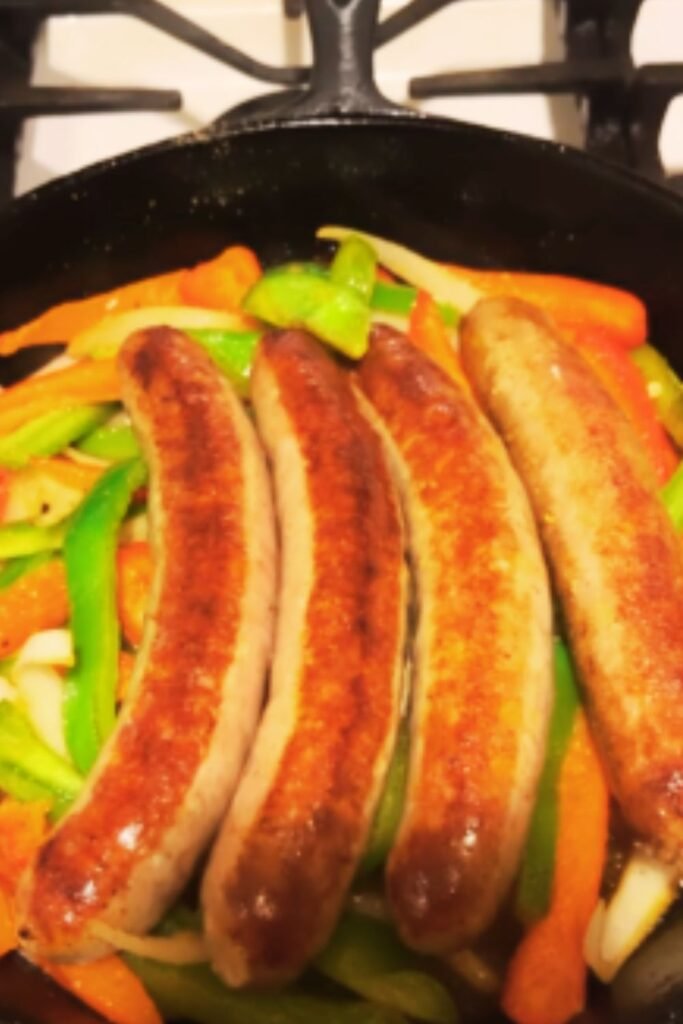
Standard Baking Method
You’ll need:
- Baking sheet or casserole dish
- Parchment paper or aluminum foil (for easier cleanup)
- 1 tablespoon olive oil
- 1 pound of Italian sausage links
- Optional: Vegetables like bell peppers, onions, potatoes, or cherry tomatoes
Instructions:
- Preheat your oven to 375°F (190°C)
- Line your baking sheet with parchment paper or foil for easier cleanup
- Place the sausage links on the baking sheet, ensuring they’re not touching
- Drizzle with olive oil and turn to coat lightly
- If adding vegetables, toss them in olive oil, salt, and pepper, then arrange around the sausages
- Bake for 25-35 minutes, turning the sausages halfway through cooking
- Verify the internal temperature has reached 160°F (71°C)
- Let rest for 3 minutes before serving
Pro tip: For extra juicy sausages, add ¼ cup of chicken broth or white wine to the baking dish. This creates a moist environment that helps prevent the sausages from drying out.
Sheet Pan Dinner Approach
This approach turns your sausage links into a complete one-pan meal.
You’ll need:
- Large baking sheet
- Parchment paper
- 2 tablespoons olive oil
- 1 pound Italian sausage links
- 2 bell peppers (any color), sliced
- 1 large red onion, sliced
- 2 cups cherry tomatoes
- 4 cloves garlic, minced
- 1 teaspoon dried oregano
- 1 teaspoon dried basil
- Salt and pepper to taste
Instructions:
- Preheat oven to 400°F (200°C)
- Line baking sheet with parchment paper
- In a large bowl, toss all vegetables with olive oil, herbs, salt, and pepper
- Spread vegetables evenly on the baking sheet
- Nestle the sausage links among the vegetables
- Bake for 30-35 minutes, turning sausages and stirring vegetables halfway through
- Ensure sausages reach 160°F (71°C) internal temperature
- Let rest for 3 minutes before serving
This method not only cooks your sausages perfectly but also provides you with delicious, flavor-infused vegetables as a side dish.
Grilling Italian Sausage Links
Grilling imparts a smoky flavor and beautiful grill marks that can’t be achieved with other cooking methods.
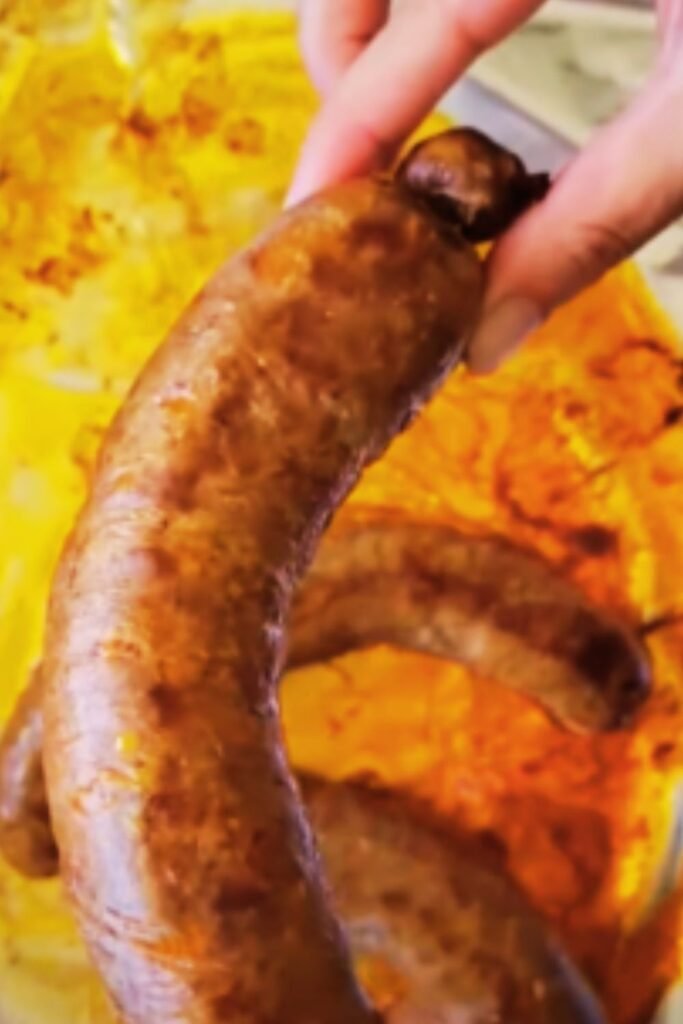
Direct Heat Grilling
You’ll need:
- Gas or charcoal grill
- Tongs
- 1 pound Italian sausage links
- Light brushing of oil (optional)
Instructions:
- Preheat your grill to medium heat (about 350-375°F or 175-190°C)
- Clean and oil the grill grates to prevent sticking
- Place the sausages on the grill, directly over the heat source
- Grill for about 5-7 minutes per side, turning occasionally
- Move to indirect heat if the casings start to split or if flare-ups occur
- Continue grilling until the internal temperature reaches 160°F (71°C)
- Let rest for 3 minutes before serving
Pro tip: Avoid using a fork to turn the sausages as this will pierce the casing and allow precious juices to escape. Always use tongs instead.
Indirect Heat Method
For more even cooking and less risk of burning:
- Preheat one side of your grill to medium-high heat (leaving the other side unlit for gas grills or without charcoal for charcoal grills)
- Sear the sausages over direct heat for 2 minutes per side to get grill marks
- Move the sausages to the indirect heat zone
- Close the grill lid and continue cooking for 15-20 minutes, turning occasionally
- Check that the internal temperature has reached 160°F (71°C)
- Rest for 3 minutes before serving
This method reduces the chance of burning the outside while ensuring the inside is thoroughly cooked.
Foil Packet Grilling
This mess-free method infuses the sausages with flavors from added vegetables and herbs.
You’ll need:
- Heavy-duty aluminum foil
- 1 pound Italian sausage links
- 1 sliced bell pepper
- 1 sliced onion
- 2 tablespoons olive oil
- Italian herbs (oregano, basil, etc.)
- Salt and pepper
Instructions:
- Create a double layer of foil large enough to hold sausages and vegetables
- Place sausages and vegetables in the center of the foil
- Drizzle with olive oil and sprinkle with herbs, salt, and pepper
- Fold the foil to create a sealed packet, leaving some space inside for steam
- Place on a preheated grill over medium heat
- Cook for 20-25 minutes
- Carefully open the packet (watch for hot steam) and check that sausages have reached 160°F (71°C)
- If desired, place sausages directly on the grill for 1-2 minutes to crisp the exterior
- Rest for 3 minutes before serving
Boiling Italian Sausage Links
While boiling alone isn’t my favorite method (as it doesn’t develop the same complex flavors as other methods), it’s excellent for ensuring even cooking and can be combined with other methods.
Basic Boiling Method
You’ll need:
- Large pot
- Water (or beer, broth, etc.)
- 1 pound Italian sausage links
- Optional flavorings: bay leaves, garlic cloves, onion chunks, peppercorns
Instructions:
- Place sausages in a large pot and cover with liquid
- Add any optional flavoring ingredients
- Bring to a gentle boil
- Reduce heat to maintain a simmer (not a rolling boil)
- Simmer for about 10-12 minutes until the internal temperature reaches 160°F (71°C)
- Remove from liquid and let rest for 3 minutes before serving
Boil Then Grill/Sear Method
This two-step approach ensures fully cooked sausages with a crispy exterior:
- Boil sausages as described above, but for only 7-8 minutes (they won’t be fully cooked yet)
- Transfer to a preheated grill or hot skillet
- Grill/sear for 3-4 minutes, turning to brown all sides
- Check that the internal temperature has reached 160°F (71°C)
- Rest for 3 minutes before serving
This method combines the even cooking of boiling with the flavor development of grilling or searing.
Safe Cooking Temperature Guide
Food safety is paramount when cooking any type of sausage. Here’s what you need to know:
| Sausage Type | Safe Internal Temperature | Notes |
|---|---|---|
| Italian pork sausage | 160°F (71°C) | No pink should remain |
| Chicken/turkey Italian sausage | 165°F (74°C) | Higher temperature needed for poultry |
| Beef Italian sausage | 160°F (71°C) | Some pink may remain if ground beef is of high quality |
| Plant-based Italian sausage | Follow package instructions | Typically needs to be heated through, not to a specific temperature |
Important: Always use a reliable meat thermometer to check the internal temperature by inserting it into the thickest part of the sausage without touching the casing.
Troubleshooting Common Issues
Even experienced cooks encounter challenges when preparing sausages. Here are solutions to common problems:
Splitting or Bursting Casings
Causes:
- Cooking temperature too high
- Rapid temperature changes
- Internal pressure from expanding fats and moisture
Solutions:
- Cook sausages over medium heat (not high)
- Consider the parboil method before grilling or searing
- Don’t prick the casings unless using the boil method
Undercooked or Raw Centers
Causes:
- Insufficient cooking time
- Cooking directly from frozen
- Inconsistent heat (especially on grills)
Solutions:
- Always use a meat thermometer to verify doneness
- Thaw sausages completely before cooking
- Use the indirect heat method for grilling
- Consider the boil-then-sear method for more even cooking
Dry, Overcooked Sausages
Causes:
- Excessive cooking time
- Too high heat
- Repeated piercing of the casing
Solutions:
- Use a timer and meat thermometer
- Cook over medium heat
- Use tongs instead of forks to turn sausages
- Consider adding liquid to the cooking process (beer, broth, wine)
- Let sausages rest for 3-5 minutes after cooking
Hard-to-Remove Casings
Causes:
- Natural casings that haven’t been properly prepared
- Insufficient cooking time
Solutions:
- Ensure sausages are cooked to the proper internal temperature
- If casings are intended to be edible but remain tough, try the boil-then-sear method
- For pre-cooked sausages with tough casings, a quick blanch in boiling water can help loosen them
Serving Suggestions
Italian sausage links are incredibly versatile and pair well with numerous accompaniments. Here are some delicious serving ideas:
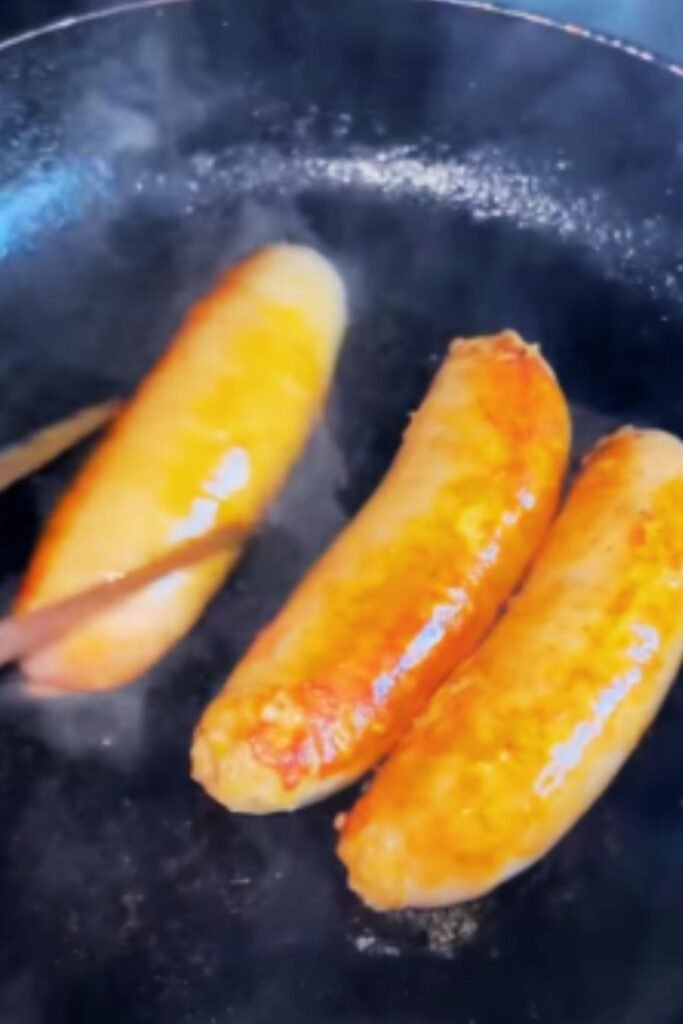
Classic Pairings
- Italian Sausage and Peppers: Serve sausages with sautéed bell peppers and onions on crusty Italian bread
- Over Polenta: Place grilled Italian sausage links over creamy polenta with a sprinkle of Parmesan cheese
- With Pasta: Slice cooked sausages and toss with pasta, olive oil, garlic, and fresh herbs
- Alongside Risotto: Pair with a mushroom or saffron risotto for an elegant meal
- In Soups: Slice and add to Italian wedding soup, minestrone, or pasta e fagioli
Sauces and Condiments
- Marinara sauce
- Whole grain mustard
- Caramelized onions
- Sautéed mushrooms with garlic
- Roasted red pepper aioli
- Pesto
Side Dish Ideas
- Garlic bread or crusty Italian bread
- Sautéed broccoli rabe or spinach with garlic
- Roasted root vegetables (potatoes, carrots, parsnips)
- Italian-style green beans with tomatoes and basil
- Simple green salad with Italian dressing
- Grilled zucchini or eggplant
Storing and Reheating Leftover Cooked Sausages
Proper storage and reheating techniques help maintain both safety and flavor:
Storage Guidelines
| Storage Method | Maximum Storage Time | Temperature |
|---|---|---|
| Refrigerator | 3-4 days | Below 40°F (4°C) |
| Freezer | 2-3 months | 0°F (-18°C) or below |
Storage Tips:
- Allow sausages to cool completely before refrigerating (but don’t leave out for more than 2 hours)
- Store in airtight containers or wrap tightly in plastic wrap or aluminum foil
- For freezing, wrap individually in plastic wrap, then place in a freezer bag to prevent freezer burn
Reheating Methods
| Method | Instructions | Best For |
|---|---|---|
| Microwave | Place on microwave-safe plate, cover with damp paper towel, heat on 70% power for 1-2 minutes | Quick reheating when in a hurry |
| Oven | Preheat to 350°F (175°C), place in baking dish with 1-2 tbsp water, cover with foil, heat for 10-15 minutes | Maintaining moisture and texture |
| Stovetop | Slice sausages, heat in skillet over medium heat with a splash of water for 4-5 minutes | Incorporating into other dishes |
| Air fryer | 350°F (175°C) for 3-4 minutes | Restoring crisp exterior |
Pro tip: Add a little water when reheating to help restore moisture. For stovetop reheating, slicing the sausages before reheating helps them warm through more quickly and evenly.
Frequently Asked Questions
Q: Is it better to boil Italian sausage before grilling?
A: Parboiling sausages before grilling can help ensure they’re cooked through evenly without burning the exterior. This is especially helpful for thicker sausages or when you’re concerned about raw centers. However, it’s not strictly necessary if you use proper grilling techniques (like indirect heat) and pay close attention to the internal temperature.
Q: How can I tell if my Italian sausage is cooked without a meat thermometer?
A: While a meat thermometer is the most reliable method, you can also make a small cut into the thickest part of a sausage. The meat should be firm, no longer pink, and the juices should run clear (not red or pink). However, investing in an inexpensive meat thermometer is highly recommended for food safety.
Q: Can I cook frozen Italian sausage links without thawing?
A: It’s possible but not ideal. Cooking frozen sausage links will take approximately 50% longer and often results in uneven cooking. For the best results, thaw sausages in the refrigerator overnight before cooking. If you must cook from frozen, the boiling method works best initially, followed by grilling or searing.
Q: What’s the difference between sweet and hot Italian sausage besides the spice level?
A: The primary difference is the addition of red pepper flakes or other hot peppers in hot Italian sausage. The base seasonings (typically including fennel, garlic, and salt) remain the same in both varieties. Some regional variations might include additional herbs like parsley or oregano, but these can appear in both sweet and hot varieties.
Q: How do I prevent my Italian sausages from curling when cooking?
A: Sausages curl when the casings contract faster on one side than the other. To prevent this, you can:
- Cook them more slowly over medium heat rather than high heat
- Make a few very shallow slits (not deep cuts) on one side
- Use a sausage basket when grilling
- Parboil them before grilling or searing
Q: Are the casings on Italian sausage links edible?
A: Most commercial Italian sausage links come in edible casings, typically made from animal intestines or collagen. If the packaging doesn’t specify, assume they are edible. Natural casings might be a bit chewy but are perfectly safe to eat. If you find the texture unpleasant, you can remove the casings after cooking or purchase skinless varieties.
Final Thoughts
Cooking perfect Italian sausage links is an achievable skill that can elevate countless meals. Whether you prefer the convenience of stovetop cooking, the even heat of baking, the smoky char of grilling, or the moisture-retention of boiling, each method has its advantages.
Remember that the key to delicious sausages lies in cooking them to the proper internal temperature (160°F or 71°C for pork sausage) while preventing them from drying out. A good meat thermometer is your best friend in this endeavor.
Don’t be afraid to experiment with different methods and find your personal favorite. You might discover that a combination approach—like parboiling followed by grilling—gives you the juiciest interior with the most flavorful exterior.
With the techniques in this guide, you’ll be able to prepare Italian sausage links that are juicy, flavorful, and perfectly cooked every time, regardless of which cooking method you choose.
